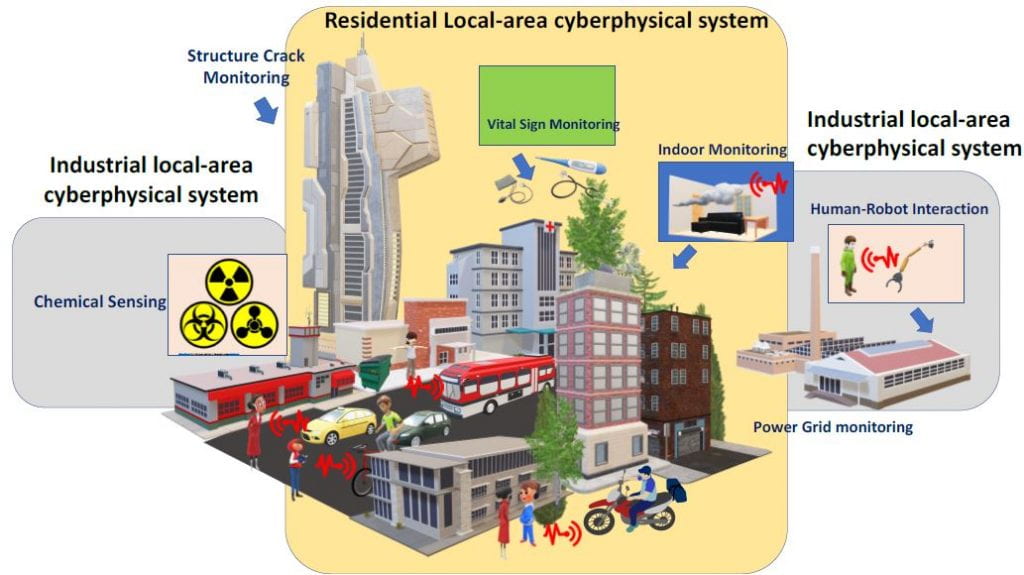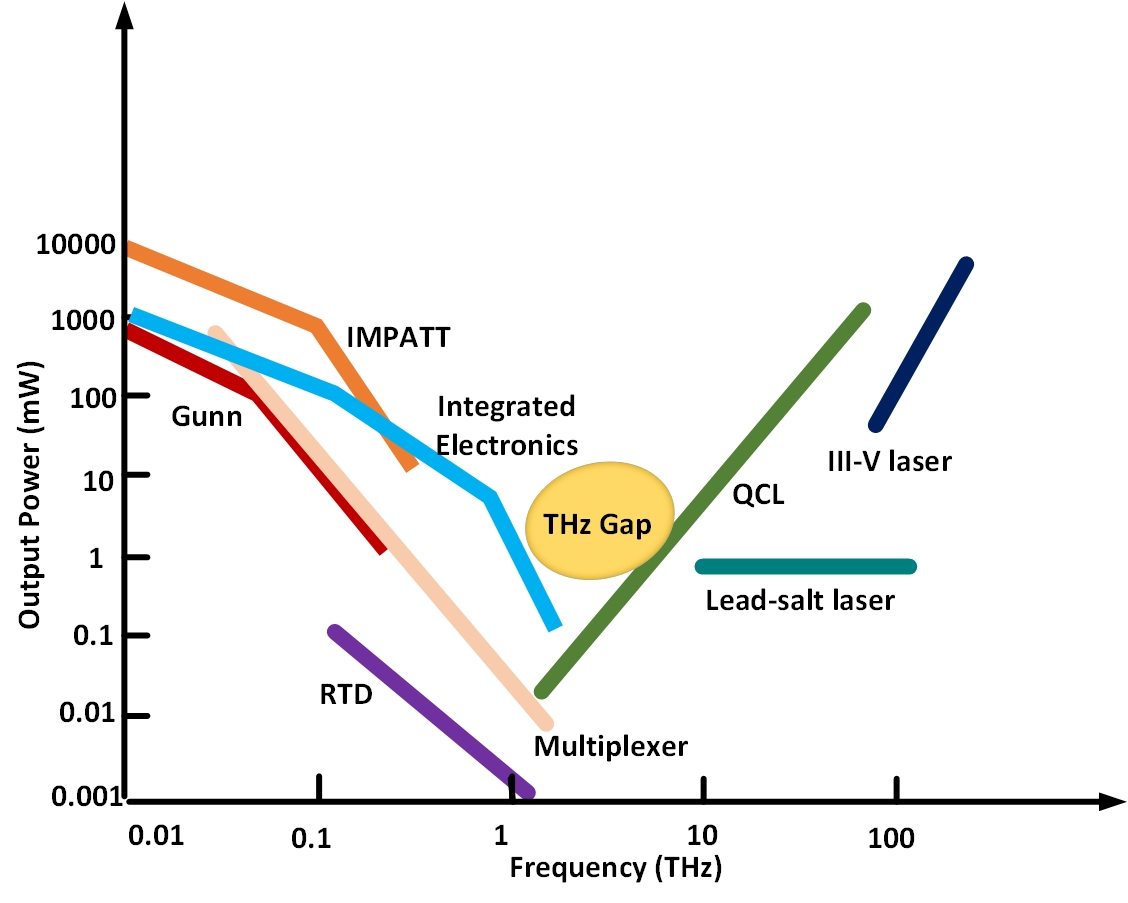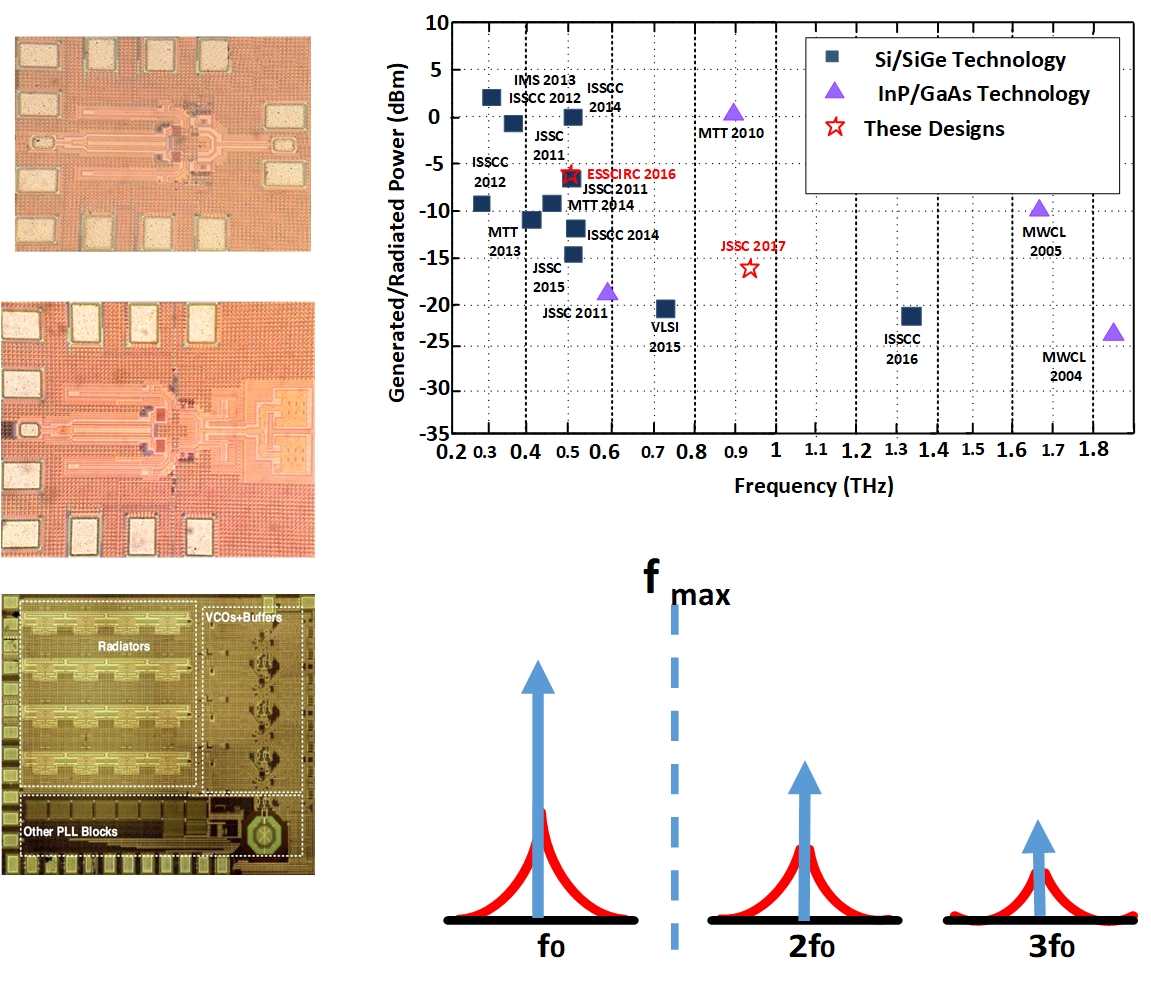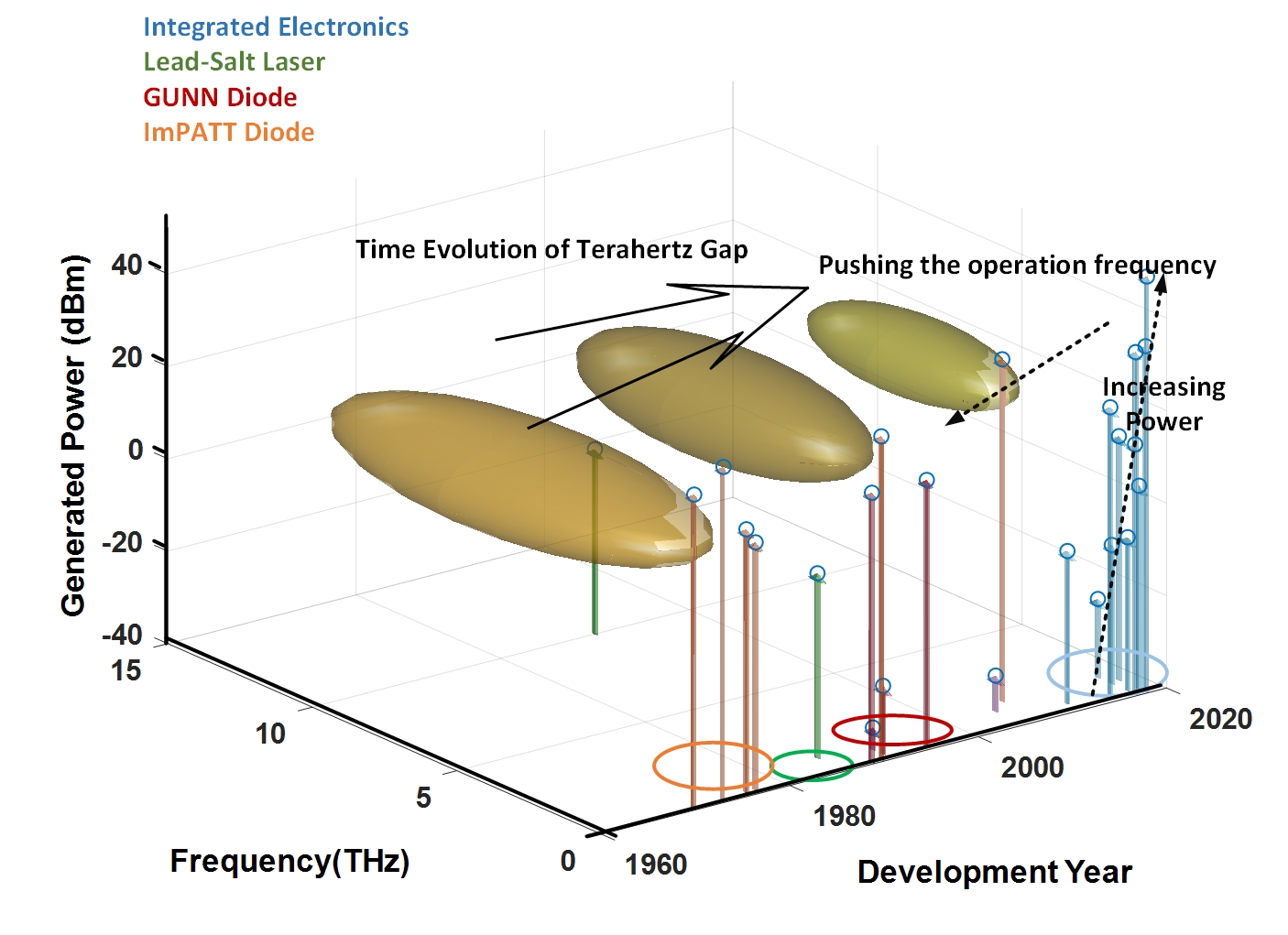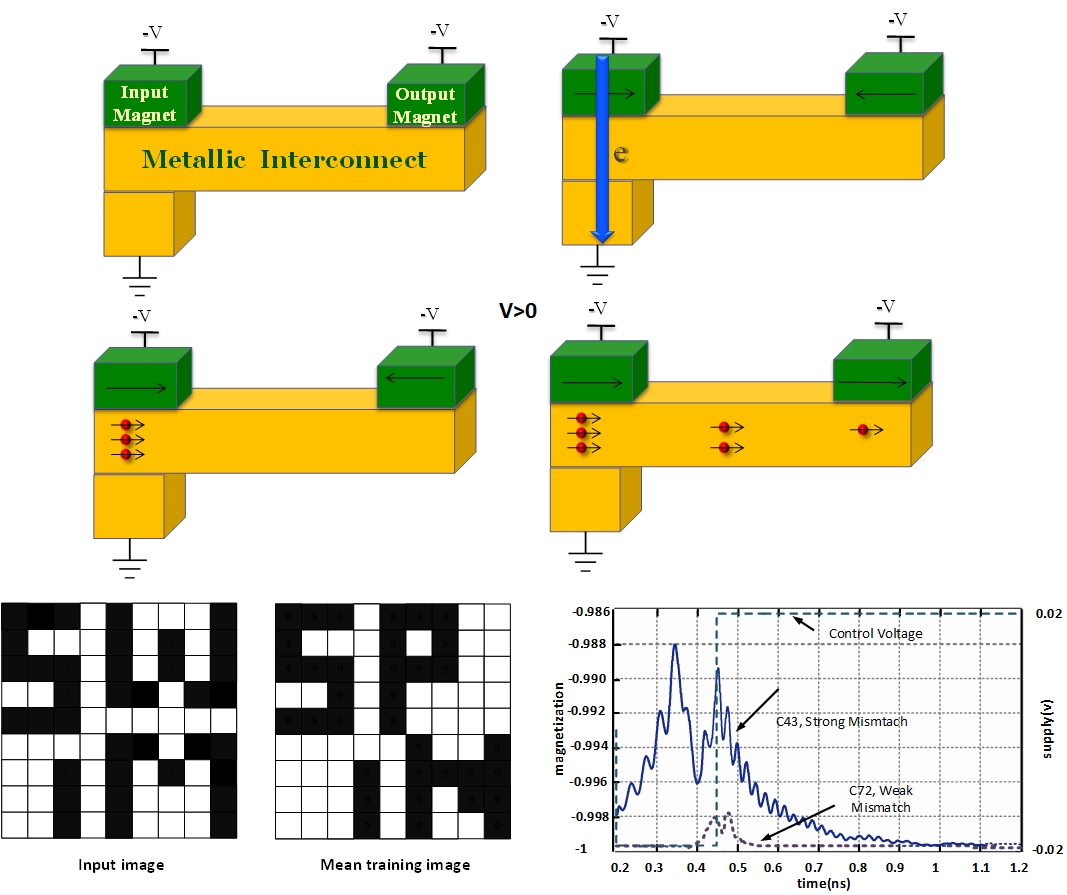Millimeter-Wave Radars-on-Chip in Cyberphyscial Infrastructures
The internet-driven communication networks revolutionized the human access to information during the past three decades. Building on top of advances in communication, security, and sensing technologies, cyberphysical systems are expected to transform the machine-to-machine and human-to-machine interactions. Realization of local-area sensing networks for cyber-physical infrastructures mandates integration of sensing, computation, control and networking into physical entities. Emerging applications enabled by local-area sensing zones require massive networks of portable miniaturized sensors. Examples include – but are not limited to – high precision vital signs monitoring, supervised human-robot interactions, chemical sensing, and 3D detection of the manufacturing defects. The sensing nodes in these application examples should be capable of precisely identifying the surrounding environments comprising machine-to-machine and human-to-machine interactions. Since the scale and density of interactions may vary within a local-area sensing infrastructure, the constituent sensors should cover ranges from few centimeters to tens of meters and achieve fine detection capability characterized by range, angular, and cross-range (lateral) resolutions. In this research we will disclose a class of new scalable wideband active sensors which meet the specific requirements of cyberphyscial infrastructures.
Related Articles: IEEE Comm Mag 20
THz Efficient Power Generation
There are growing applications in the mm-wave and sub-mm-wave frequency ranges due to smaller wavelengths compared to radio frequencies, plethora of water-absorption bands, and larger available bandwidth of data transmission. Integrated solutions have become the desired platforms to realize systems at these frequencies thanks to their high yield and low cost. Signal generation beyond the fmax of transistors, relies on the generation of high power harmonic signals. Due to the limited efficiency of harmonic signals, high power generation remains a challenge. By finding the major nonlinear mechanisms of power generation in transistors, we propose a large-signal model and a design methodology based on the Volterra-Weiner theory to optimize the desired nonlinear behavior of a transistor or of any nonlinear element. The combination of arbitrary passive networks and the nonlinear element are formulated to find the optimum circuit configuration to achieve desired performance. The proposed systematic model extraction, which is not limited to any particular transistor type, can be exploited to capture the nonlinear behavior of MOSFET, BJT, HBT, HEMT, MESFET, HFET, or other transistor types.
Related Articles: APR 20, JSSC 17, ESSCIRC 16, ISSCC 15, JSSC 16
Efficient Wideband and Low Phase Noise Signal Generation at mm-wave Frequencies
One of the challenges of signal generation at high frequency is the degradation of oscillatory waveform in terms of purity and tuning capability. The loss associated with passive components increase by going to mm-wave and terahertz frequencies which directly impacts the phase-noise of the oscillators. On the other hand, the tuning components such as varactors need to exhibit both a high quality factor and a large variation of the capacitance which is not feasible as they become comparable with the device parasitic capacitors. By implementing novel oscillator structures which resolve the phase-noise and tuning-range limitation of mm-wave and terahertz oscillators, emerging applications such as high frequency communication circuits, sensing, and imaging are enabled.
Related Articles: SSCL 2018, TMTT 2019, RFIC 2022
Neuromorphic Computation Based On Emerging Technologies
In the “integrated digital” domain clock frequencies have not changed within the last few years, and emerging technologies like “spin-based logic” gates with a lower switching energy have been introduced. In addition, non-Boolean computation, approximate computation and machine learning techniques are introduced to overcome the limits of Boolean computation for recognition applications. Emerging technologies and in particular spintronic devices exhibit unique features, such as high density, non-volatility, low switching energy, and instant wakeup. However, the energy-delay product of spin-based logic gates is larger than that of CMOS and implementation of Boolean logic gates is not a good benchmark for these devices. Neuromorphic computation is what suits these devices very well.
Related Articles: TNANO 2016

